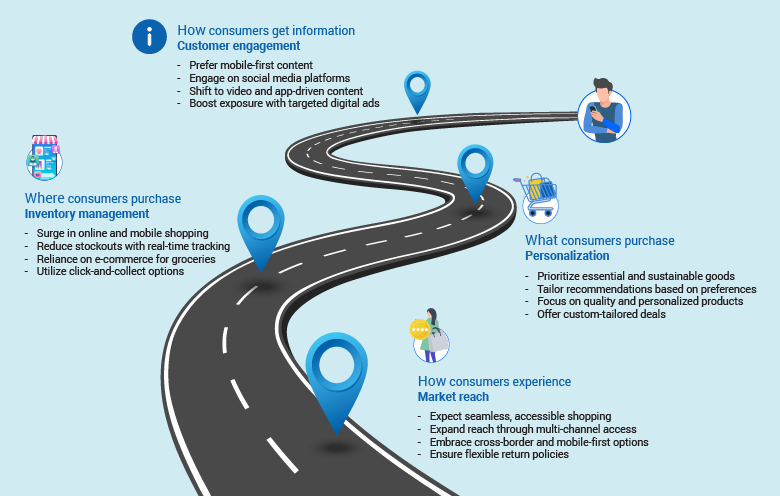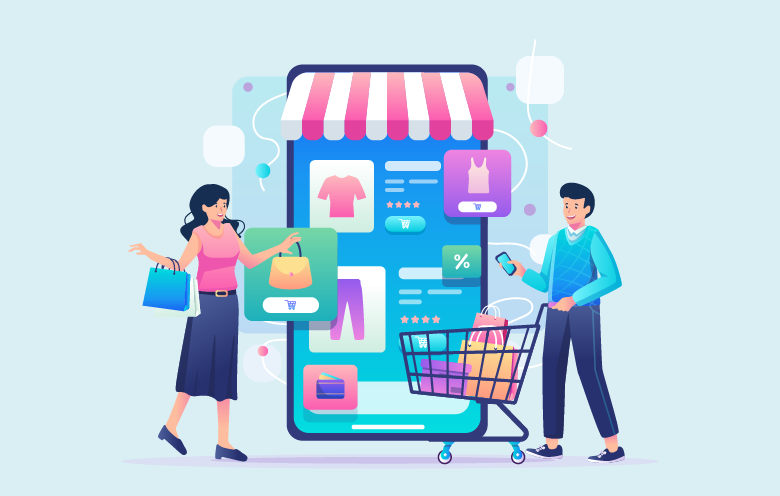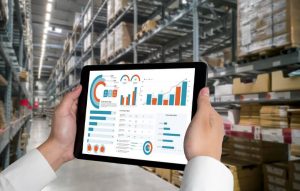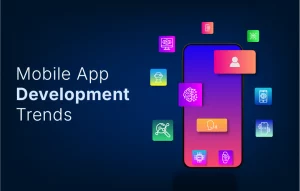Retail transforms quickly with rapid advances in e-commerce app development. Unlike past technological shifts, this one moves fast, powered by mobile apps that redefine customer experiences and reshape retail operations. Companies that adapt see higher sales and gain deeper insights into their customers, securing a solid competitive advantage.
While some retailers embrace these changes, others hesitate, questioning the ROI. Yet early adopters see the impact on their bottom lines – higher conversion rates, better customer retention, and improved operational efficiency that are difficult to ignore. Over the past decade, few technologies have reshaped the retail landscape as profoundly as e-commerce apps. This shift offers opportunities and challenges as businesses strive to stay relevant in an increasingly digital world.
This blog will explore how custom app development drives this transformation. We will look at its core functions in retail, the shift in consumer behavior, and the types of e-commerce apps that fit different business models. We will also discuss the latest trends shaping the field and the benefits of custom app development for long-term growth.
The core functions of e-commerce app development in retail
E-commerce app development transforms retail by enhancing each stage of the consumer journey. From personalized recommendations to real-time inventory tracking, these apps meet evolving demands and deepen customer connections. Below, see how shifts in consumer behavior redefine decision journeys and impact business strategies.

Shifts in consumer behavior will transform decision journeys, requiring swift adaptation from companies.
Enhance customer engagement
Mobile apps are not just an extension of retail. They are the primary touchpoint for how consumers get information about brands and products. With features like push notifications, personalized recommendations, and easy payment options, apps drive higher engagement rates. For instance, 80% of customers who download an app engage more frequently with the brand, a substantial increase over mobile websites.
Take Starbucks as an example. The Starbucks app allows users to customize orders, earn loyalty points, and access in-store promotions. Starbucks addresses how consumers get information while enhancing engagement. This combination of convenience and personalization makes the app central to Starbucks’ customer engagement strategy. The result? Mobile orders now account for over 30% of Starbucks’ total transactions at U.S. stores, increasing efficiency and customer loyalty.
E-commerce apps facilitate real-time engagement, making brands more responsive to customer needs. This impact extends beyond online sales. Brick-and-mortar locations benefit as apps enable in-store pickups and exclusive offers.
Suggested: Did you know custom apps can revolutionize customer engagement and boost loyalty? Check out how our solutions redefine the retail experience for today’s market.
Personalization through data-driven insights
Understanding what consumers purchase lets companies create tailored experiences. E-commerce apps allow businesses to gather and analyze customer data in real time. Every interaction within the app provides valuable insights – purchase patterns, preferences, browsing behavior—that can deliver personalized experiences. Companies leverage this data to improve conversion rates and customer satisfaction.
For instance, Amazon uses its app to provide personalized recommendations and optimize delivery schedules based on past behavior. This customized approach goes beyond the shopping cart to every part of the app experience, increasing the chances of repeat purchases. According to Amazon’s financial reports, personalized recommendations contribute to 35% of Amazon’s total revenue.
Today, customers expect personalization as the norm. Retailers that lack it risk losing customers to competitors who meet these needs more effectively. E-commerce apps provide this level of customization.
Suggested: Ready to deliver hyper-personalized experiences your customers expect? See how AI-powered mobile apps can transform insights into action, driving loyalty and revenue growth.
Streamline operations and inventory management
As more people turn to new ways of where they purchase, mobile applications transform backend operations. e-commerce apps integrate with inventory management systems, allowing real-time stock tracking to avoid overstocking or stockouts and streamline logistics.
Zara’s app shows this in action. It tracks customer purchases and preferences in real time, helping Zara make data-driven decisions about inventory allocation and supporting where consumers purchase. This keeps Zara’s supply chain responsive and efficient, fitting its “fast fashion” model with reduced costs and faster turnaround.
As more retailers adopt similar strategies, using e-commerce apps for inventory management is becoming a competitive differentiator. It lowers operational costs while enhancing customer satisfaction with better product availability.
Suggested: Want to know how custom e-commerce apps can streamline your supply chain? Discover how our solutions improve inventory accuracy and boost operational efficiency.
Expand market reach and accessibility
E-commerce apps remove geographical barriers, giving retailers access to customers beyond their physical reach. Apps open doors to global markets, diversifying revenue and attracting new customer bases.
Alibaba’s app-based retail approach serves as a prime example. It dominates not only in China but also globally. Features like cross-border shopping and multi-language support draw millions of international customers. Alibaba’s global sales rose by 30%, fueled by its app. This model shows that retailers of any size can enter new markets by leveraging e-commerce apps.
As ‘mobile-first’ customers grow, retailers without strong app solutions risk missing essential growth opportunities. Convenience and accessibility are crucial. Customers expect seamless experiences across devices and borders.
Types of e-commerce apps: Which one is right for you?
Choosing the right type of e-commerce app is a key decision in mobile e-commerce strategy. Each type targets a unique audience and purpose. Here is a breakdown:
| Type of e-commerce app | Description | Examples |
| Business-to-Consumer (B2C) | Connects businesses with individual consumers to drive direct sales and provide personalized shopping experiences. | Amazon, Target |
| Business-to-Business (B2B) | Designed for businesses purchasing in bulk, focusing on large orders, negotiations, and automated invoicing. | Alibaba, ThomasNet |
| Marketplace (C2C) | Acts as a platform where individuals can sell products to each other with app support for payments, security, and ratings. | eBay, Etsy |
| Subscription-based | Offers recurring product deliveries or services, typically through a subscription plan for a steady revenue model and convenience for consumers. | Netflix, Dollar Shave Club |
| Single-brand retailer | Developed by individual brands to provide a dedicated app for their products, enhancing brand loyalty and direct customer engagement. | Nike, Zara |









